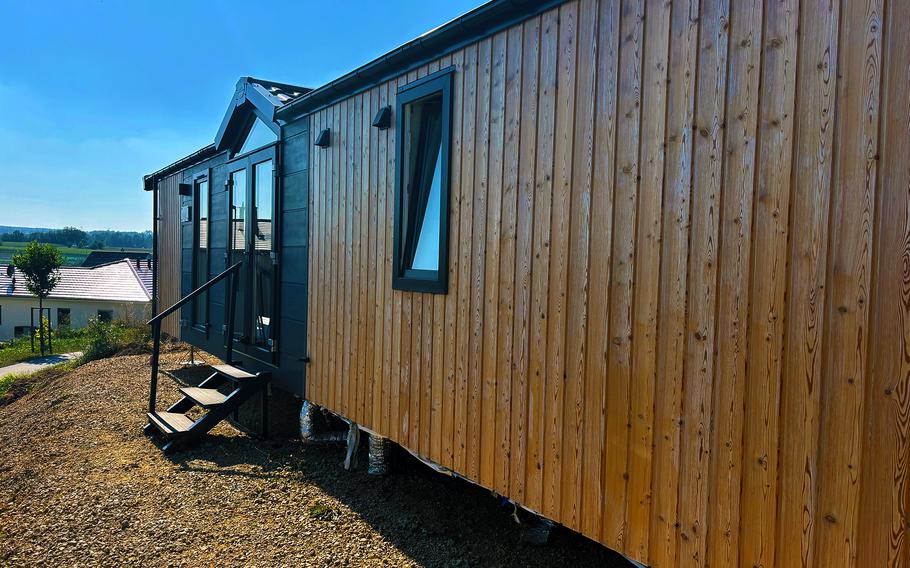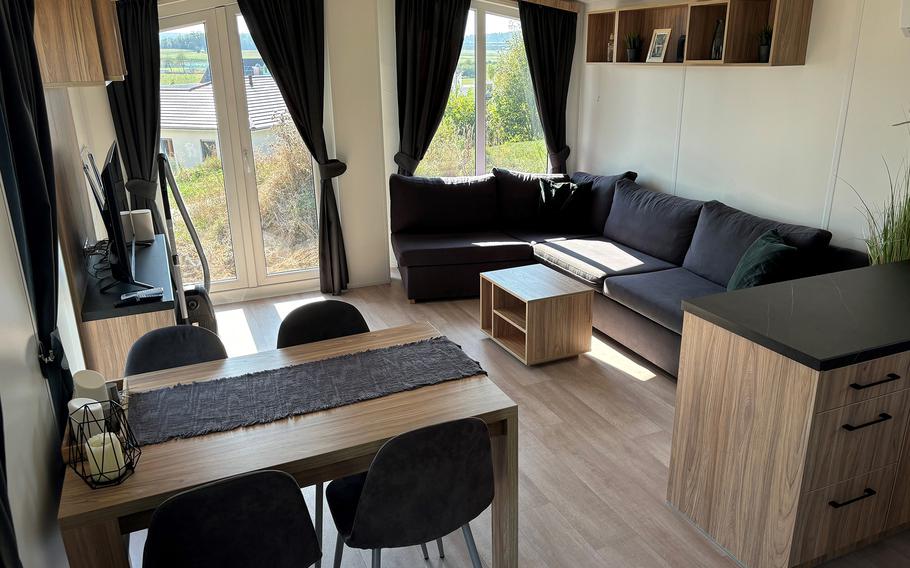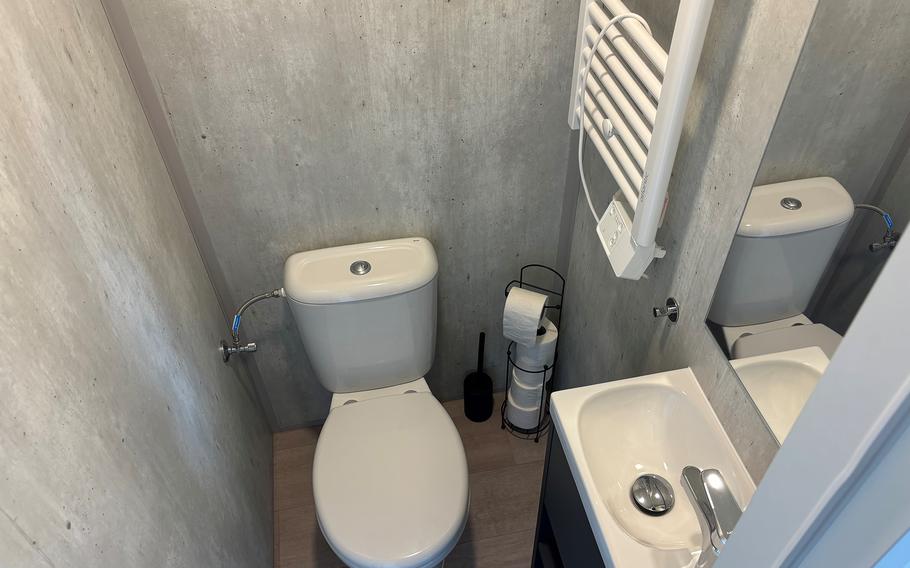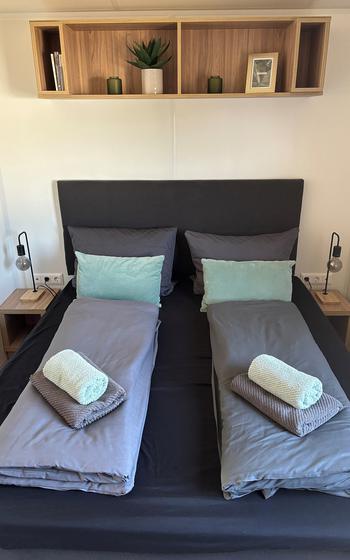
This tiny house by Sezi Homes in Vilseck, Germany, seen here on Sept. 7, 2024, is available for rent. It is fully furnished and has 645 square feet of space. (Matthew M. Burke/Stars and Stripes)
Living in what has been dubbed a tiny home is growing in attraction for many Americans, with housing costs soaring in lots of markets and social media influencers presenting an array of modern minimalist possibilities.
My 8-year-old son and I recently decided to go on a tiny house trial run, spending a day in one of the two downsized dwellings in Vilseck’s bustling Sonnenleite neighborhood owned by enterprising businessman Sezayi Er, owner of Sezi Homes.
It was a warm September day when the two of us settled into a fully furnished, 645-square-foot home for a guys’ staycation less than 2 miles from Rose Barracks.

The living room in this tiny house by Sezi Homes in Vilseck, Germany, is remarkably spacious, showing that tiny house living doesn't have to be uncomfortable. (Matthew M. Burke/Stars and Stripes)
I found the digs surprisingly spacious, with an expansive living room complete with TV, Wi-Fi and an L-shaped couch. There was a kitchen, with a sink and stove, and a family-sized table. The refrigerator and washing machine were tucked away in cabinets.
“This isn’t tiny at all!” my son exclaimed.
The bedroom was a bit smaller than the typical American master bedroom, but I didn’t feel cramped. The shower room was plenty big enough and reminded me of the quaint Cape cottages of my youth.
The only room I found constricting was the bathroom, just big enough for a toilet and sink.
We ate delivery pizza and watched soccer. It was a great escape.
My interest in tiny-house living began at a very early age. During my childhood in Massachusetts, my mother exposed me to the works of poet and transcendentalist philosopher Henry David Thoreau.
Thoreau was just 27 when in 1845 he eschewed modern society and built his 10-by-15-foot cabin in the Concord woods by Walden Pond.
Thoreau lauded the humble log homes and cottages of the poor and urged freedom through minimalism.
“Most men appear never to have considered what a house is, and are actually though needlessly poor all their lives because they think that they must have such a one as their neighbors have,” Thoreau wrote in “Walden.”
It was in that same vein that Er, a 36-year-old entrepreneur from Weiden, settled on renting tiny houses as his new venture in 2020. Business was slow at his telecommunications stores due to the coronavirus pandemic.
He launched his first tiny house, and then a year later, he added a second next door. Both are the same size.

Quarters are tight in the bathroom of this tiny house by Sezi Homes in Vilseck, Germany. The toilet and small sink embody the minimalist design of the 645-square-foot house. (Matthew M. Burke/Stars and Stripes)
While there is no agreed-upon industry standard dictating the size of a tiny house, most are under 550 square feet, according to the Tiny House Co., a broker based in Lippstadt, Germany.
In the U.S. there are more than 10,000 tiny homes and the average cost is around $50,000, which is 87% cheaper than the typical U.S. home, according to the website Today’s Homeowner, which is operated by contractor and Emmy-nominated TV personality Danny Lipford.
Tiny homes have become particularly popular in Germany in recent years, Er said. Various initiatives, consultants, manufacturers and settlements made up of such houses can be found online.

The master bedroom in this fully furnished tiny house by Sezi Homes in Vilseck, Germany, is spartan yet adequate. (Matthew M. Burke/Stars and Stripes)
The movement is attractive to Germans who want to take the hassle of planning and cost out of home ownership, said Er, who has rented his properties to many curious Americans.
I found out about the tiny houses in the area from a German friend who owns and rents out his own tiny house. I asked about that one, but it was booked, so he suggested Sezi Homes.
My tiny house experience was a far cry from Walden Pond. I didn’t have time to contemplate life’s mysteries, nor was I “roughing it” in any real way, but I did learn that I could survive and thrive in a tiny dwelling.
So I think Thoreau would be proud.
On the QT
Address: Sonnenleite 8h, Vilseck, Germany
Hours: Check website for availability
Cost: 95 euros per night for one person; 115 euros per night for two
Information: sezi-homes.de/tiny-house-mieten